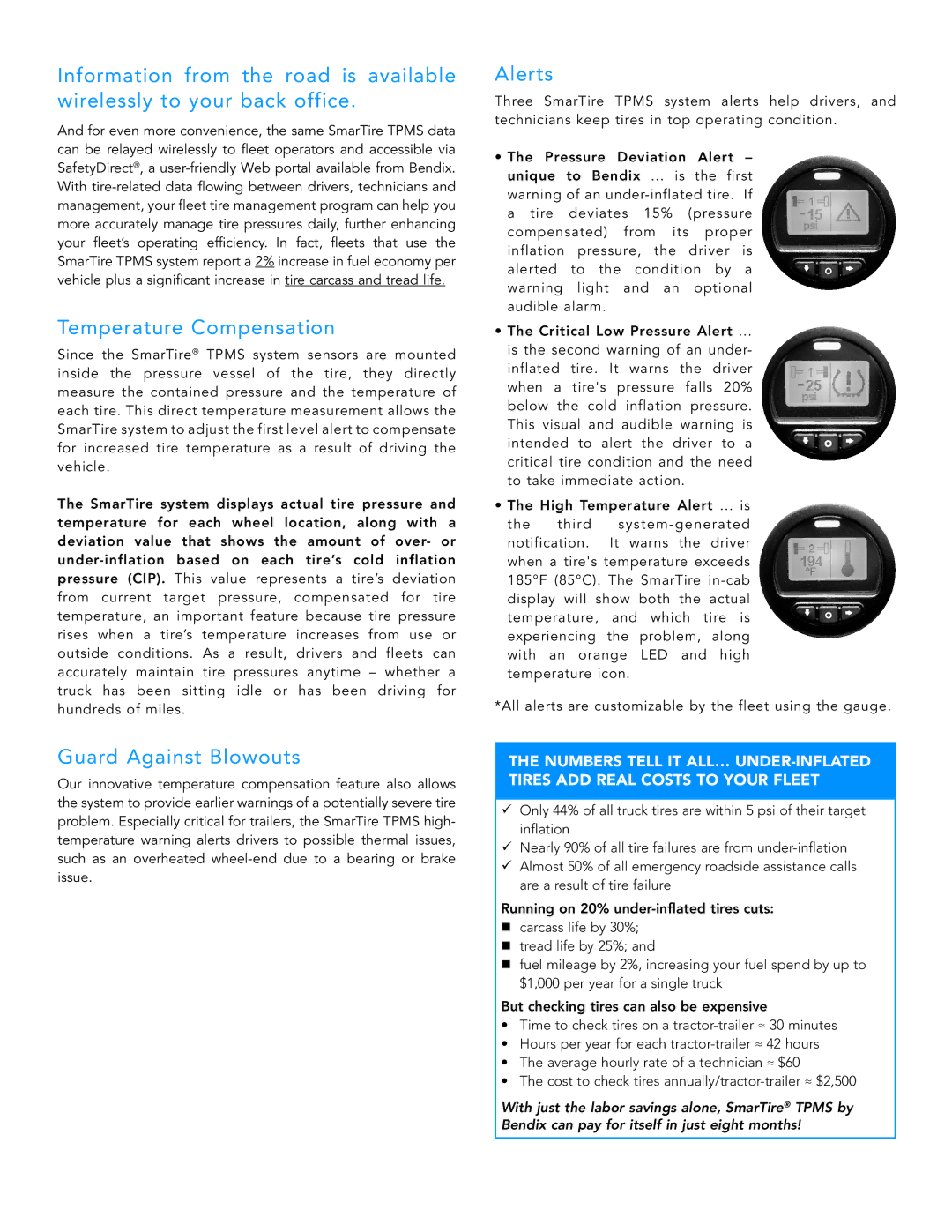
Information from the road is available wirelessly to your back office.
And for even more convenience, the same SmarTire TPMS data can be relayed wirelessly to fleet operators and accessible via SafetyDirect®, a
Temperature Compensation
Since the SmarTire® TPMS system sensors are mounted inside the pressure vessel of the tire, they directly measure the contained pressure and the temperature of each tire. This direct temperature measurement allows the SmarTire system to adjust the first level alert to compensate for increased tire temperature as a result of driving the vehicle.
The SmarTire system displays actual tire pressure and temperature for each wheel location, along with a deviation value that shows the amount of over- or
Alerts
Three SmarTire TPMS system alerts help drivers, and technicians keep tires in top operating condition.
•The Pressure Deviation Alert – unique to Bendix … is the first warning of an
•The Critical Low Pressure Alert … is the second warning of an under- inflated tire. It warns the driver when a tire's pressure falls 20% below the cold inflation pressure. This visual and audible warning is intended to alert the driver to a critical tire condition and the need to take immediate action.
•The High Temperature Alert … is the third
*All alerts are customizable by the fleet using the gauge.
Guard Against Blowouts
Our innovative temperature compensation feature also allows the system to provide earlier warnings of a potentially severe tire problem. Especially critical for trailers, the SmarTire TPMS high- temperature warning alerts drivers to possible thermal issues, such as an overheated
THE NUMBERS TELL IT ALL…
üOnly 44% of all truck tires are within 5 psi of their target inflation
üNearly 90% of all tire failures are from
üAlmost 50% of all emergency roadside assistance calls are a result of tire failure
Running on 20%
ncarcass life by 30%;
ntread life by 25%; and
nfuel mileage by 2%, increasing your fuel spend by up to $1,000 per year for a single truck
But checking tires can also be expensive
•Time to check tires on a
•Hours per year for each
•The average hourly rate of a technician ≈ $60
•The cost to check tires
With just the labor savings alone, SmarTire® TPMS by Bendix can pay for itself in just eight months!
